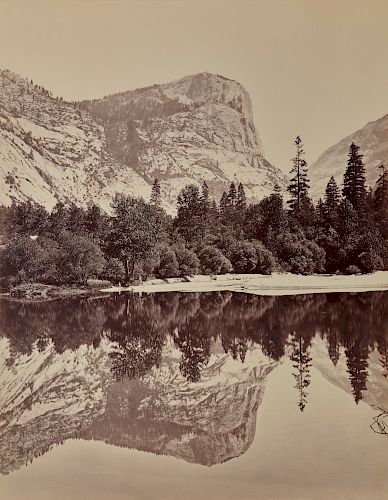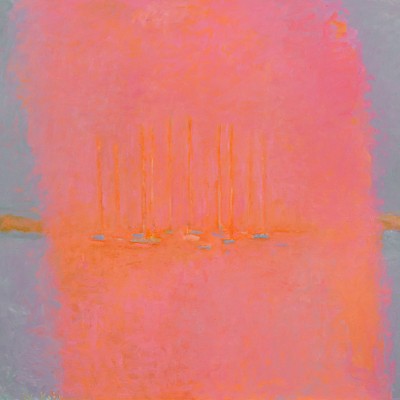CARLETON WATKINS, (American, 1829-1916), Mount Watkins, Fully Reflected in Mirror Lake, Yosemite
Lot 152
Categories
Estimate:
$4,000 - $6,000
Absentee vs Live bid
Two ways to bid:
- Leave a max absentee bid and the platform will bid on your behalf up to your maximum bid during the live auction.
- Bid live during the auction and your bids will be submitted real-time to the auctioneer.
Bid Increments
| Price | Bid Increment |
|---|---|
| $0 | $100 |
| $1,000 | $100 |
| $2,000 | $250 |
| $5,000 | $500 |
| $10,000 | $1,000 |
| $20,000 | $2,500 |
| $50,000 | $5,000 |
| $100,000 | $10,000 |
| $200,000 | $25,000 |
| $500,000 | $50,000 |
About Auction
By Grogan & Company
Nov 17, 2019
Set Reminder
2019-11-17 11:00:00
2019-11-17 11:00:00
America/New_York
Bidsquare
Bidsquare : The Fall Auction
https://www.bidsquare.com/auctions/grogan/the-fall-auction-4561
Grogan & Company info@groganco.com
Grogan & Company info@groganco.com
- Lot Description
CARLETON WATKINS
(American, 1829-1916)
Mount Watkins, Fully Reflected in Mirror Lake, Yosemite
mammoth plate albumen print on original mount
1865-1866; inscribed verso Mirror Lake Yosemite Valley No. 75
20 1/2 x 16 in.
Provenance: A New England Estate; Grogan & Company, November 5, 2017, Lot 98; a New Hampshire Collector.
Literature: Naef, Weston, and Lewis-Hult, Christine Carleton Watkins: The Complete Mammoth Photographs (Los Angeles: J. Paul Getty Museum, 2011), Cat. No. 234, p. 104
Other Notes: Carleton Watkins first photographed the Yosemite Valley in 1861, producing mammoth-plate negatives (18 x 22 in.) of the awe-inspiring natural landscape. These images ultimately made their way to the East Coast, where they are said to have been shown to Abraham Lincoln in 1863. Lincoln was so moved by the images that he proclaimed that the Yosemite Valley forever remain in the public domain, thereby establishing the precursor to today's Yosemite National Park. In the summers of 1865-6, Watkins returned to the Yosemite Valley, creating numerous striking mammoth-plate photographs as he recorded the now-iconic vistas. These views were faithfully re-photographed by Ansel Adams half a century later. Unfortunately, for much of the twentieth century, Watkins was a forgotten name in the history of American photography, and it was not until the late 1970s that academics and collectors alike began to rediscover his work. The intervening century had not been kind to Watkins' corpus - by the mid-1870s, Watkins was in financial ruin and had ceded control of his negatives to a creditor, and in 1906 the bulk of his work was destroyed in the San Francisco earthquake and fire. Over the years, many universities and public libraries deaccessioned their collection of Watkins' mammoth plate prints. Thus, today, very few examples of Watkins' Yosemite photographs survive, and this newly discovered collection of twenty works - works that represent some of his most recognizable Yosemite views - is a truly remarkable addition to Watkins' oeuvre. - Shipping Info
-
Grogan & Company does not offer in-house packing and shipping services; however, we work closely with a number of local businesses who are ready to address any and all of your shipping needs.
Recommended shippers:
Global Pack Ship
617.743.6245
globalpackship@aol.comUPS Store Needham
508.314.1568
store2897@theupsstore.com
-
- Buyer's Premium



 EUR
EUR CAD
CAD AUD
AUD GBP
GBP MXN
MXN HKD
HKD CNY
CNY MYR
MYR SEK
SEK SGD
SGD CHF
CHF THB
THB














